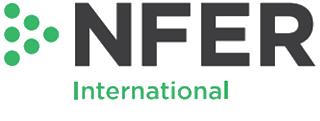Schools
What is the purpose of TIMSS?
The study aims to assess achievement in mathematics and science amongst pupils in countries worldwide. TIMSS also provides important background information that can be used to improve teaching and learning in mathematics and science. It collects detailed information about curriculum and curriculum implementation, instructional practices, and school resources. This information can be used to identify factors that influence academic achievement and pupils’ attitudes towards learning and to provide educational policymakers, school leaders, teachers and researchers with powerful insights in order to inform teaching and learning.
How were schools chosen to participate in TIMSS?
TIMSS set high participation targets in order to ensure that data is of good quality and that valid comparisons between countries can be made. Around 150 primary schools were randomly selected to represent Northern Ireland by the international team who runs the study. The schools were then invited by NFER to participate. The international team also specified which of their Year 6 class(es) and pupils participated. In total, a sample of 3,877 pupils participated from 134 schools.
What was involved for schools?
The study took place during the period 7 May to 7 June 2019. The school session took around two and a half hours.
NFER supported schools throughout their participation with the aim of ensuring that the burden on schools was as low as possible. For instance, a trained NFER TIMSS administrator with teaching experience delivered the study in schools. Our administrators brought everything to the school and ran the session and all marking was done by NFER.
How did schools benefit from taking part?
- The opportunity to tell us about your school and to be a part of a study that directly influences policy making in Northern Ireland and around the world.
- The opportunity for pupils to represent Northern Ireland in an important global study.
- Certificates to celebrate the participation of each pupil and school.
- As a recognition of the additional organisation which may have to be done by the School Co-ordinator, schools received one day of teacher supply cover.
- Schools are also receiving a report with information collected from the pupil questionnaire, for instance, on attitudes to mathematics. This includes comparative national information, which schools reported that they find this useful for self-evaluation.
What was involved for pupils?
Pupils were asked to complete one paper-based booklet containing mathematics and science questions, with no need for any special preparation or studying. Following the assessment, pupils were asked to complete a questionnaire containing questions on their background, attitudes towards school and experiences.
Who carries out the study?
TIMSS was delivered in Northern Ireland by the National Foundation for Educational Research (NFER) on behalf of the Department of Education. NFER also delivered the 2011 and 2015 TIMSS cycles in Northern Ireland.
The study is coordinated internationally by the International Association for the Evaluation of Educational Achievement (IEA).
The contributions of pupils, teachers, principals and parents are what make TIMSS a success, and we are very grateful to all those who took part – thank you! These contributions are highly valued and of great importance to the Department of Education and the International Association for the Evaluation of Educational Achievement (IEA).
How NFER looks after the data
NFER take data protection very seriously and comply with the Data Protection Act 2018. Any personal information NFER collect will be held securely. The Department of Education receive the names of the schools and pupils selected to take part in TIMSS to help with recruitment and the administration of the study. However, they do not receive the feedback that is provided to schools after the study, nor any school or pupil response data that allows individual school’s or participant’s responses to be identified. The information collected has been used to compare how well pupils learn mathematics and science around the world. No school, teacher or pupil is named or can be identified in any of the reports or any information which is published.
Please view the TIMSS 2019 privacy notice for further details about the information we collect and how we use it. A child-friendly privacy notice for pupils is also available.
See FAQs for schools for more information.
